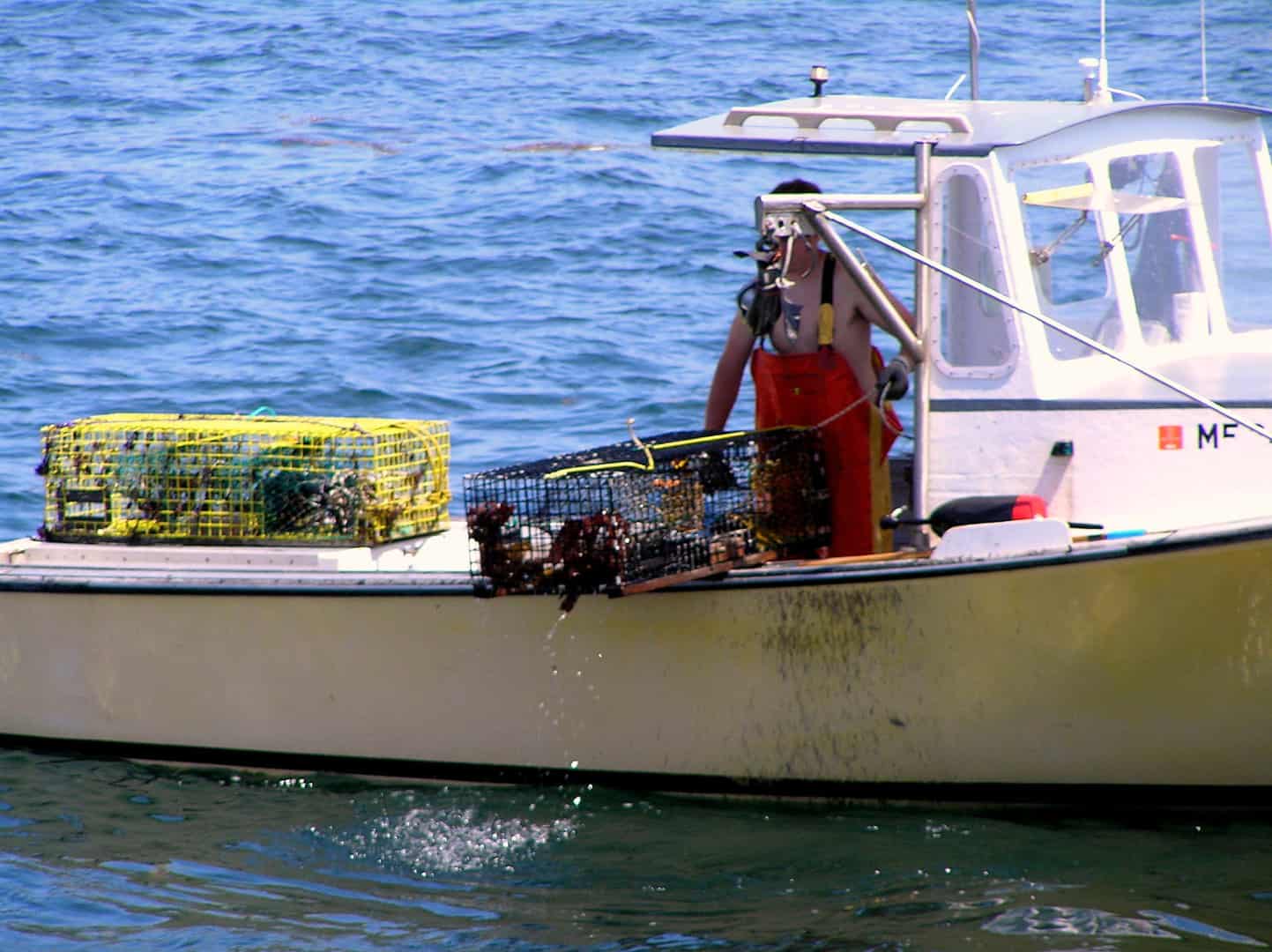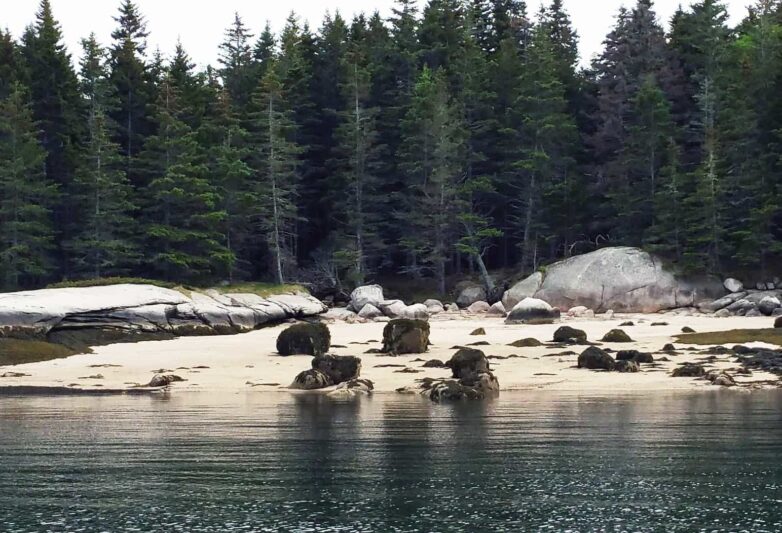Lobsters, Fishers, Boats, and Traps
McGlathery, part of Merchant Row, sits south of Stonington, home to Maine’s largest and most successful lobstering fleet. Between 0430 and 0600, over 100 lobster boats fire up Mondays through Saturdays, collectively powered by about 30,000 horsepower of diesel engines. Then between 1030 and 1330, they barrel back to one of four Stonington co-ops to sell their hauls and refuel. By 1500 most are home with their families or working on their moored boats. They don’t fish on Sundays.
Our experience is that lobstermen are among the finest people on Earth. They are the first to help if you need it, are completely OK with sharing waters with sailors and kayakers, and sincerely appreciate how much we enjoy the fruits of their labors served at home or in the local restaurants.
Lobstermen (and women) are working while we cruisers are vacationing. And they’re working hard. What they legitimately worry about is cruisers fouling their trap rigs. When we sail in Merchant Row, we reduce the risk of a warp foul by shunning the engine and sailing as much as possible, passing pots to the up-current side, and giving any workboat actively hauling a wide berth. We think hard about where we drop the hook when lobster traps are in the area.
We also always wave, and 9 times out of 10 get a hearty wave in return.
It’s important to know that the McGlathery anchorage is near, but not too close to, the primary lobster boat thoroughfares into and out of Stonington. If you happen to be awake early in the morning, you’ll hear the fleet heading out at first light; but it will be a distant rumble. Furthermore, lobster boat wakes that can make anchorages rolly don’t seem to affect McGlathery quite as much.
One final thought: FOG! When Maine is thick with fog, McGlathery and much of Merchant Row can (on occasion) be clear. Isle Au Haut lies upwind of this area during prevailing southwesterlies. It’s big enough to warm the damp air, and a lens of clear air can form in its lee to the north. But if this isn’t happening, and the islands are wrapped in fog, radar and a good radar reflector are essential. Inshore lobster boats DO NOT USE AIS. They do use radar. That said, be ever cautious. Lobstermen have incredible local knowledge and confidence in their piloting skills, so they aren’t always attentive to radar screens. They also can’t hear our fog horns over the 300+ HP diesel that they’re running at nearly full throttle as they sprint home to get the best dock pricing for their catch!






